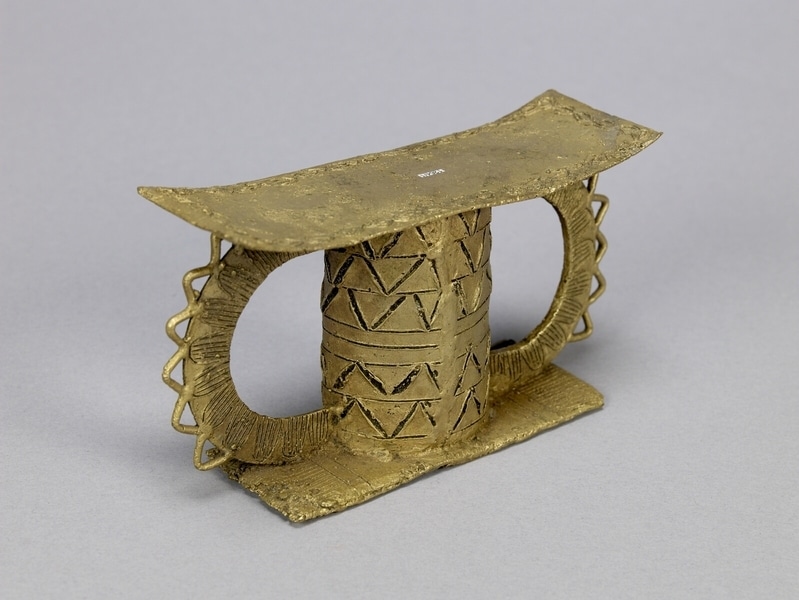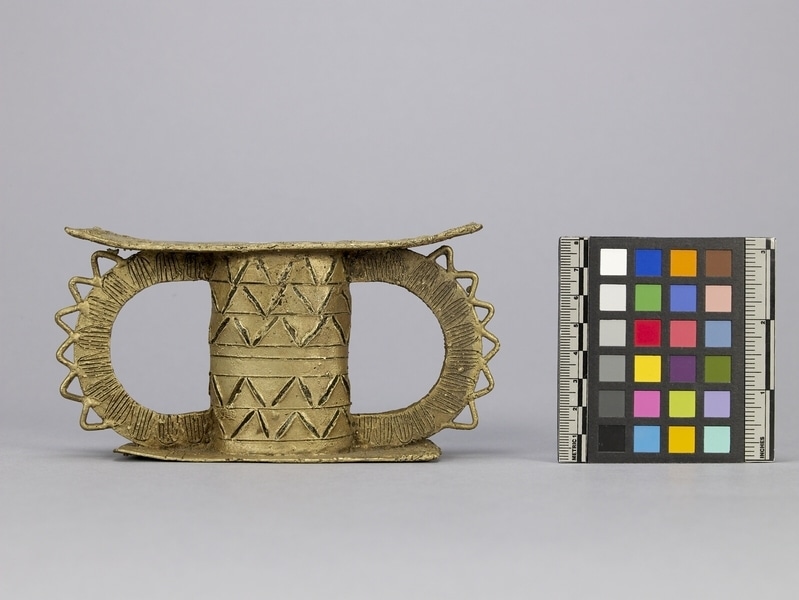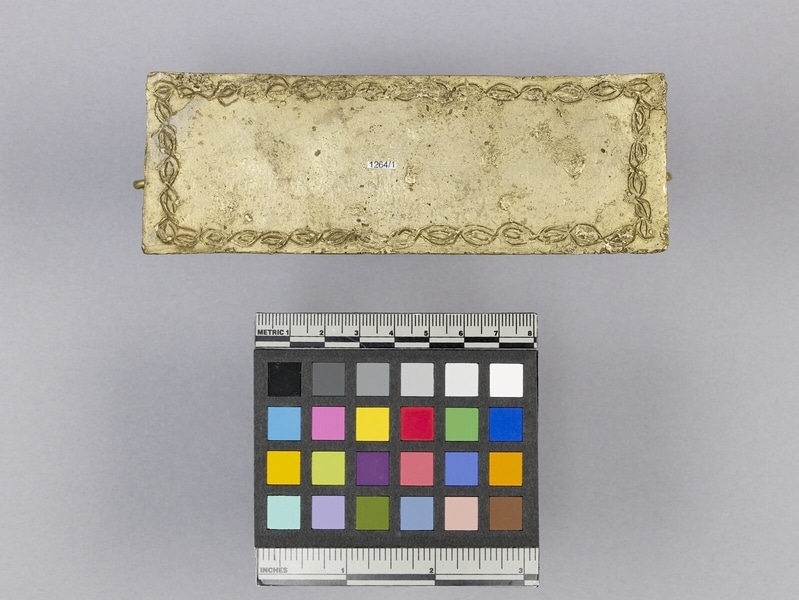Stool Item Number: 1264/1 from the MOA: University of British Columbia



Description
Brass stool with flared rectangular piece on top, central column with two-semi-circle attachments on either side, and a rectangular base. An engraved scalloped design is found around the perimeter of the flared rectangular piece. Triangular-shaped line designs are found around the perimeter of the central column. Triangular-shaped edging is attached to the rim of the semi-circle attachments. The base is decorated with a series of thin horizontal lines and two thick vertical lines.
History Of Use
For the Akan (or Asante), the stool was used as a symbol of power and political office. In this bureaucratic system, the stool was usually carved from a single piece of wood and was kept by individual chiefs within the Akan states as a claim to power and land ownership. The stool can be seen as a supernatural entity, which symbolizes the identity of its owner. The designs that are visible on the surface of the stool’s support reflects a specific meaning to its user. The stool of the Asantehene (monarch), their claim to power over the Ashanti nation, is the Golden Stool (Sika Kofi Dwa).
Specific Techniques
Made with the cire-perdue or lost-wax method. The mould is made of beeswax, covered with clay, and then fired. The wax melts and the hollow clay cast is then filled with scraps of copper-based alloy, before being fired for a second time.
Item History
- Made in Ghana
- Collected between 1967 and 1973
- Owned by Dugal Macgregor before February 8, 1988
- Received from Dugal Macgregor (Donor) on February 8, 1988
What
- Name
- Stool
- Identification Number
- 1264/1
- Type of Item
- stool
- Material
- brass metal
- Overall
- height 8.0 cm, width 16.0 cm, depth 5.0 cm
Who
- Culture
- Asante
- Previous Owner
- Dugal Macgregor
- Received from
- Dugal Macgregor (Donor)
Where
- Holding Institution
- MOA: University of British Columbia
- Made in
- Ghana
When
- Collection Date
- between 1967 and 1973
- Ownership Date
- before February 8, 1988
- Acquisition Date
- on February 8, 1988
Other
- Item Classes
- metalwork
- Condition
- good
- Current Location
- Case 98
- Accession Number
- 1264/0001